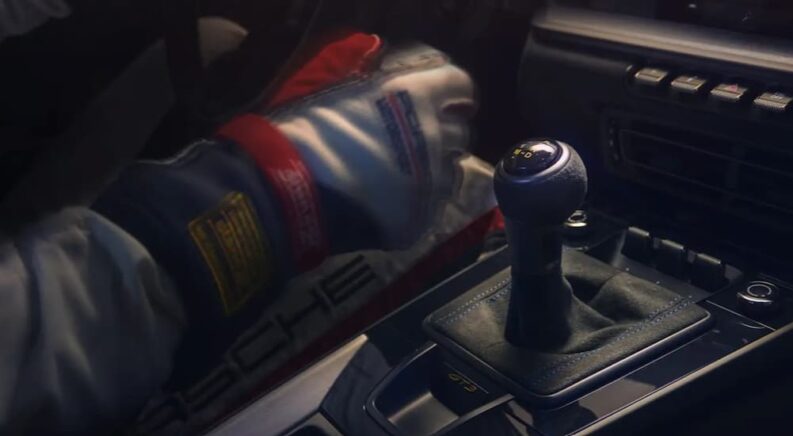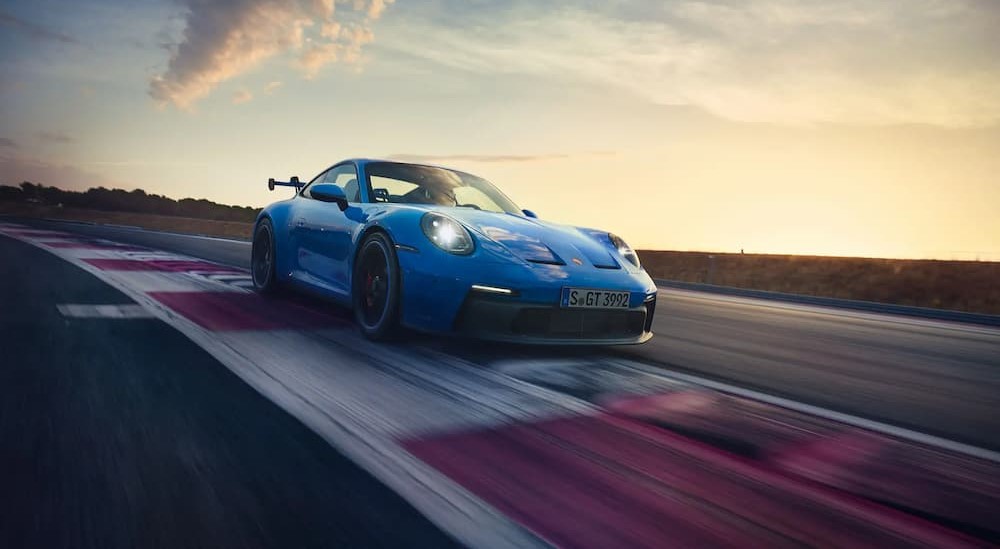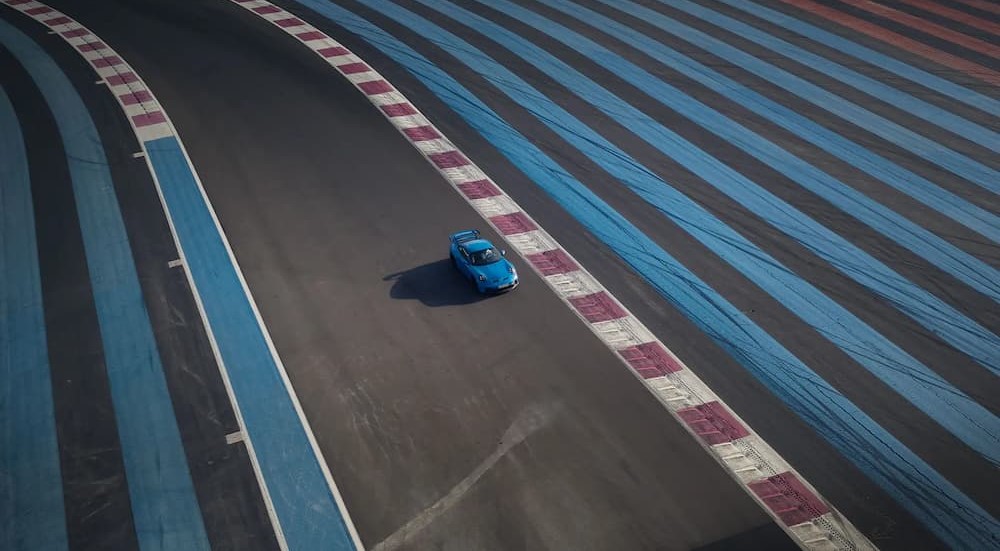Are you a racing fan who also happens to love all things Porsche? There’s a series for that. Since its introduction nearly four decades ago, the Porsche Carrera Cup has been gaining steam worldwide. In 2021, it finally reached US borders with the inaugural Porsche Carrera Cup in North America. As of this writing, the fourth North American season is already underway, with stops ranging from Miami to Montreal. That’s just a fraction of its global reach.
If you’re a Porsche fan just now learning of the Carrera Cup, you probably have many questions, not the least of which is why you haven’t heard of it before. I’m here to answer those questions and prepare you for race day. Join me in exploring this one-make series and how it lets people do what Porsches were designed to do: go fast.
History of the Porsche Carrera Cup
The story of the Porsche Carrera Cup (PCC) began more than half a century ago. In 1973, the inaugural International Race of Champions (IROC) was announced. It pitted a dozen drivers from NASCAR Winston Cup, Formula One, USAC Champ Car, and SCCA Can-Am against each other, all driving Porsche Carrera RSRs identically built and configured. The first season consisted of three events at the former Riverside (CA) International Raceway, with the fourth event at the Daytona (FL) International Speedway road course. The late Mark Donohue won three of the four races en route to the championship.
IROC only used the Carrera RSR for one season before replacing it with the Chevy Camaro. (The series continued until 2006 before being shuttered, though a potential revival is in the works.) The seed for a Porsche-only series was planted, though, and in 1986, Porsche launched the Carrera Cup. The first season was contested at tracks in the automaker’s native Germany with Joachim Winkelhock winning the title. From there, the series has greatly expanded its reach in terms of where and how people can race.
Today, PCC is a massive organization with multiple levels. The top series is the Porsche Supercup, created in 1993 as a support series for Formula One. The next level is the various regional Carrera Cups. In addition to the original German championship, there are now Carrera Cup series for France (est. 1987), Japan (2001), Great Britain (2003), Australia (2003), Asia (2003), Scandinavia (2004), Brazil (2005), Italy (2007), North America (2021), and the Middle East (2024). The third level is the Sprint Challenge/GT3 Cup Trophy, which competes in various markets as a middle step between local club racing and the Carrera Cup.
The success of PCC has also led to numerous other one-make series, including the Ferrari Challenge, the Commodore Cup, Formula Mazda, and the Dodge Viper Challenge. However, none have had the success or longevity of Porsche’s ventures.
What Porsche Model Does the Carrera Cup Use?
The series is named after the model it originally used. The Porsche 911 Carrera RSR burst onto the scene by winning the 1973 24 Hours of Daytona and had a storied history by the mid-1980s, making the logical choice for a one-make Porsche racing series.
In 1990, the series switched to the new Porsche 911 GT3 Cup. However, they decided to keep the moniker since the Carrera Cup name was now well-known. To this day, the Porsche Supercup and all the regional Carrera Cups run the 911 GT3 Cup vehicle. It’s currently on the Type 992 generation, which packs 510 hp with pristine handling and downforce. It’s almost as fast as the 911 GT3 R purpose-built race cars! The Porsche Sprint Challenge has separate classes for the 911 GT3 Cup 992, the 911 GT3 Cup 991 II, and the 718 Cayman GT4. More than 5,000 911 GT3 Cup cars have been made exclusively for PCC events.
Like the original IROC series, the philosophy behind the Carrera Cup is simple: everyone starts on equal footing. Not only are the vehicles technically identical, but they use the same tires and fuel, too. Refueling is not allowed during the race, and there are limits on how many sets of slick tires teams can use during a weekend. Typically, the only reasons a driver will pit during a race are because of vehicle damage or to switch between slicks and rain tires.
This approach makes the Carrera Cup the ultimate test of driver ability. All your opponents have the same great car, and you can’t outengineer them with a crazy setup or outsmart them with a fancy strategy. The only way to beat someone is to outdrive them or get lucky, and you can’t count on luck.
Where Does Porsche Carrera Cup North America Compete?
So far, each season of the Carrera Cup North America has consisted of eight race weekends. For 2024, each weekend is held in conjunction with a Formula One or IMSA WeatherTech SportsCar Championship event. IMSA officially sanctions the series. (They’ve also previously held events in conjunction with IndyCar and NASCAR.) The 2024 venues are:
- Sebring International Raceway, Sebring, FL (IMSA)
- Miami International Autodrome, Miami Gardens, FL (F1)
- Circuit Gilles Villeneuve, Montreal, QC (F1)
- Watkins Glen International, Watkins Glen, NY (IMSA)
- Road America, Elkhart Lake, WI (IMSA)
- Indianapolis Motor Speedway (Road Course), Indianapolis, IN (IMSA)
- Michelin Raceway Road Atlanta, Braselton, GA (IMSA)
- Circuit of the Americas, Austin, TX (F1)
Past circuits and events the Carrera Cup North America has raced at include the Grand Prix of Long Beach (2022 and 2023), WeatherTech Raceway Laguna Seca (2022 and 2023), the Grand Prix of Toronto (2022), and Virginia International Raceway (2021).
What Is the Carrera Cup Format?
Each Carrera Cup has multiple classes, with the exact structure varying based on the region. In the Carrera Cup North America, there are three main championship categories:
- Pro: For drivers ages 17 to 35 (orange car numbers)
- Pro-Am: For drivers ages 36 to 49 (green car numbers)
- Masters: For drivers ages 50 and older (yellow car numbers)
In addition, there is a separate Porsche Junior championship for drivers ages 25 and under who are in their first season. These drivers simultaneously compete for the Pro and Junior tiles. There is also a Team championship that counts the performance of up to two drivers per team. Finally, there is the ANDIAL Cup sub-championship for the IMSA tandem events.
Each race weekend has two features, meaning 16 total races in the season. Time trials determine the starting field, and the races are 40 minutes each, a relative sprint in auto racing terms. There’s no sitting back and saving your car for the end. Drivers must give it their all every second of every race, bringing back the nature of pure competition.
A Series That Makes Stars
Slowly but surely, North America is waking up to what much of the world has known about for decades. The Porsche Carrera Cup is a simple concept that’s breathtaking to watch. Don’t take our word for it. Watch a past event on the IMSA YouTube channel and see for yourself.
Furthermore, the North American series is already helping launch careers. Seb Priaulx, the inaugural Pro champion, parlayed that success into multiple FIA World Endurance Championship wins and a seat with Porsche for the 2024 IMSA WeatherTech SportsCar Championship. The 2022 champion, Parker Thompson, now has an IMSA ride (though with Lexus, sadly). This follows in the footsteps of other Carrera Cup champions worldwide. Joachim Winkelhock, the inaugural German champion, went on to win the 24 Hours of LeMans, the 24 Hours Nürburgring, and the British Touring Car Championship, among other accolades. Other notable former Carrera Cup champions include Edward Sandström, Richard Westbrook, Fabian Coulthard, René Rast, Christophe Bouchut, and Tim Harvey.
Want to learn more about the Porsche Carrera Cup North America? Visit their website or get to an event. The series also live-streams every race on Peacock and IMSA TV, then uploads them to YouTube afterward, letting you watch from anywhere in the world. If you’re like me, it won’t be long before you have the itch to hop into a Porsche 911 GT3 Cup and take a few laps.






